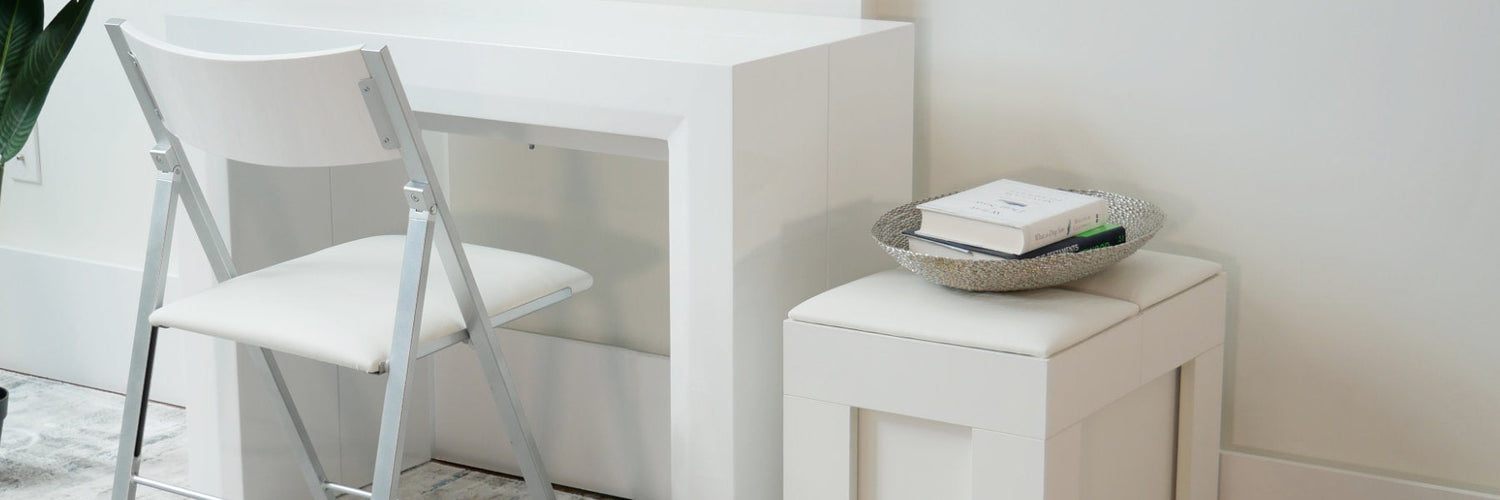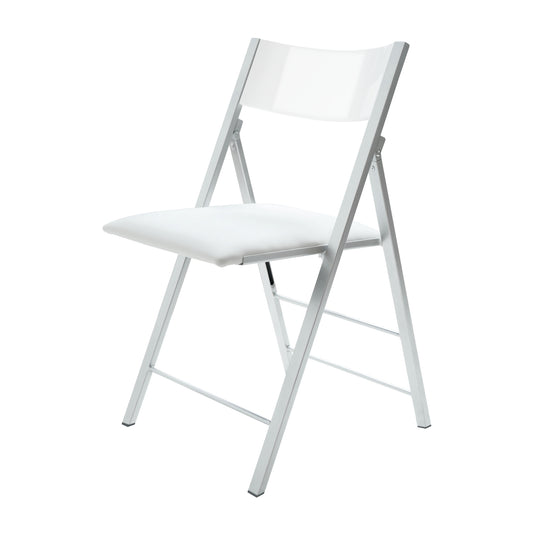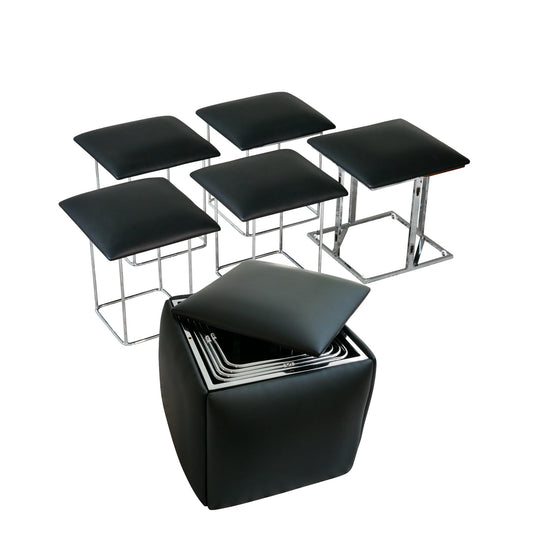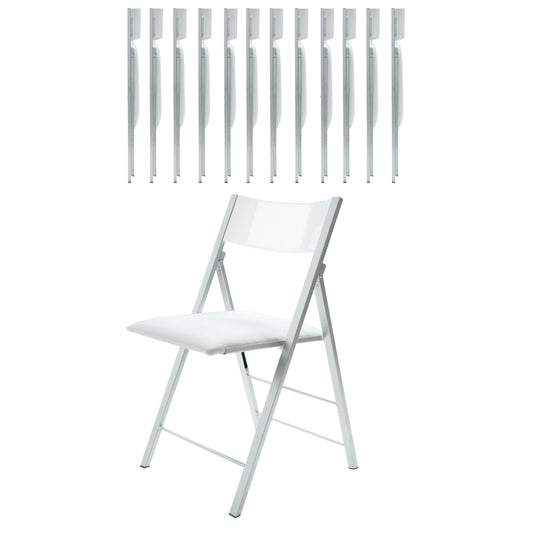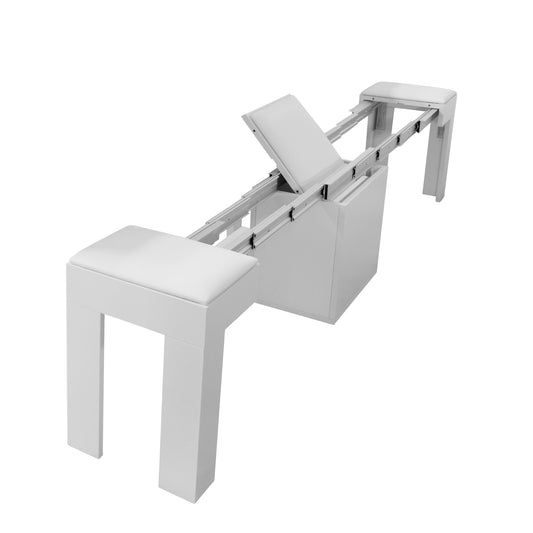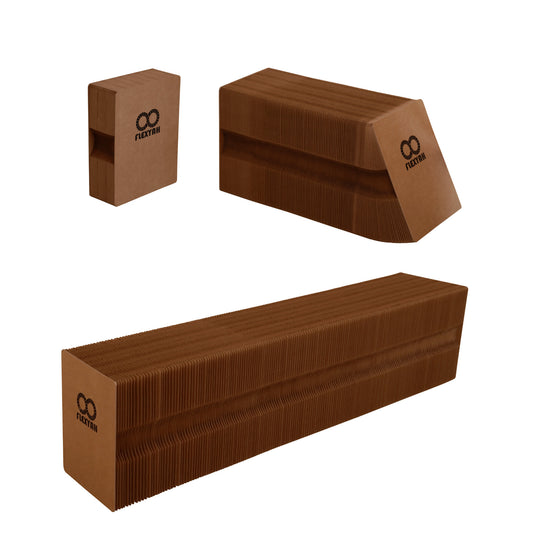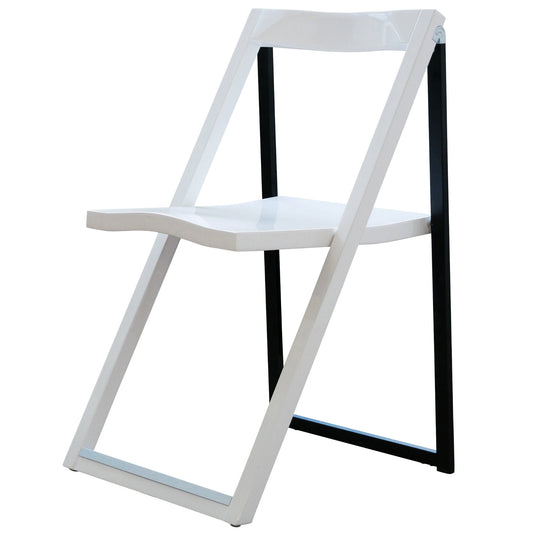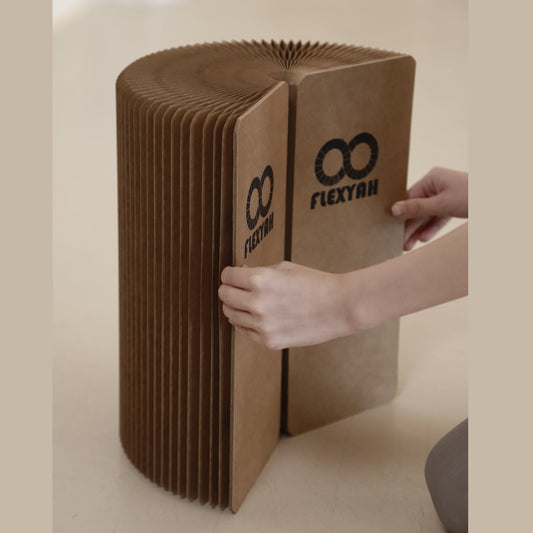Kitchen and dining tables are similar in that they’re both places people sit to eat, congregate, and study, and both can be made from wood and metals. Sometimes kitchen tables can be dining tables, but dining tables are not always able to be kitchen tables. This is how and why the two are different.
If you’re curious why dining tables cost more than kitchen tables (in most situations), and how to tell them apart, we’re happy to help. Below you’ll find what makes kitchen and dining tables different, similar, and how to pick the right one if you have a mixed space.
|
Kitchen Tables |
Dining Tables |
|
|
Everyday use |
X |
|
|
Look and style |
Casual |
Elegant |
|
Made from high-end materials |
X |
|
|
Built for durability vs. style |
X |
|
|
Price |
Less expensive |
More expensive |
|
Size width and length |
Small to medium |
Medium to large |
|
Seating |
4 - 6 people |
6 - 10 people |
|
Average height |
28 - 30 inches |
28 - 30 inches |
|
Common shapes |
Square, rectangle, circle |
Oval, rectangle, circle |
|
Uses |
Everyday eating and casual get togethers |
Dinners, holiday meals and celebrations, formal get togethers |
|
Decor |
Casual, seasonings and toppings for foods like butter, fruits and snacks in a bowl |
Vases and centerpieces, high-end salt and peppershakers, glass bowls and art pieces |
These two types of furniture are similar, but the differences are why one costs more than the other, and their uses and placements define whether they’re considered kitchen or dining tables.
If you do see a kitchen table that is also a dining table and costs the same, like the ones here at Expand Furniture, it is because the quality of the kitchen table is equal to a traditional dining table. With that said, here’s some more examples between the two in general.
Space Available
Dining rooms are more spacious than kitchens as the intended use of the room is for eating and entertaining guests where a kitchen has countertops, a stove and refrigerator, as well as other items providing less space for eating. The smaller spaces in kitchens mean less areas to sit, so the size of the table shrinks where the dining table is meant to fill the dining room as the centerpiece and seat more people comfortably.
Uses and Durability
When you’re cooking a large meal or have friends, kids, or family helping, you’re going to need space. Knives chopping, hot pans and pots being set, and food dyes can damage the table top which is why you don’t want to spend as much on high-end materials for a kitchen table as you do with a dining table.
Kitchen tables are meant to be durable and backup surfaces while you prepare food and dining tables are meant to display the food making it look fantastic. The cozy size of the kitchen table makes it perfect for casual meals and conversations, or breakfasts where you’re tired.
The table tops on kitchen tables are meant to hold up to passing sugar, butter, cereal and other spillable items on a regular basis, where dining tables give you space to relax and spread out while you enjoy a meal that is pre-plated or passed on platters and serving dishes with less spilling.
You can certainly enjoy a beverage with friends at both, or have a game night, but when it comes to anything that would damage the surface of the table, chances are you’re going to use the kitchen and not the dining table as you want to preserve your fine furniture and chairs. A proper dining table set will be built to withstand the spills and wear and tear.
Price
Kitchen tables are going to be cheaper than dining tables because they are smaller and require less materials, and the materials tend to be less expensive than dining tables. They can both be made from wood like oak, mahogany, or cherry and have metal legs, but a dining table top may use something more sophisticated like granite, glass, or marble.
These cost more as they require mining, weigh more so shipping increases the price, and they’re built to last vs. a kitchen table which you may replace during a remodel or every 10 to 15 years.
If you have kids and they move out, you may decide to redo the kitchen. You no longer need a table for four or six, so you expand to a chef's kitchen with an island and choose an extendable table, a folding table, or a simple two to four seat kitchen table. You keep the dining table because everyone is now grown up and it can still host and seat your kids when they come home for visits or the holidays.
Seating
With less space comes less seats, so kitchen tables may seat four or six people and the seats may be stools, benches, less decorative chairs, and other casual forms of seating. Dining table sets are going to have more ornate chairs even if they’re made from the same woods, and may feature padding covered in cloth, and in some cases be art deco to add to the sophistication and ambience of the dining room.
Shapes
Circles, squares, and rectangles are all popular for both dining and kitchen tables. But dining tables have more options and tend to be longer. You’ll find oval shaped tables, longer rectangles, and sometimes hexagons with long lengths vs even sides. This is because the length of dining table is meant to seat more people and match the length of the dining room. The shape of a dining table impacts the size and feel of the room.
Decor
Kitchen table decor is more casual and could feature a butter plate, seasonings and spices you use like hot sauce or salt and pepper, and sometimes trinkets from travel like a novelty paper napkin holder. The items are for use during multiple meals and save you time from having to run to the cabinets and replace items when having breakfast, lunch, or a snack.
Dining table decor tends to be more artistic including glass bowls, candles, vases for bouquets, and may be meant to complement the surface of the table top like granite spheres. Other times it is meant to complement the ambience of the room and reflect light if there is a chandelier above.
You may have a fancier salt shaker and peppermill on a dining table vs. plastic ones that came off the shelf of a grocery store, or ones from a gift shop you found on vacation. These styles go on the kitchen table as they're more casual.
Placemats and napkins on a dining table will likely be higher end fabrics and linens, sometimes leather, where kitchen placements may be rubber or materials that are hard to stain and easy to clean. Paper napkins or less colorful and fancy patterns and colors of cotton are more common on a kitchen table, and higher end cottons, linens, and color schemes are found on dining tables.
Both types of tables are for eating, enjoying company, and can be used to study or do work. But kitchen tables are made for multiple uses, smaller spaces, and to handle damaging tasks like cooking and cutting where dining tables are for entertaining and display. We hope this helps you whether you’re shopping for a new table or are just curious about the differences.
